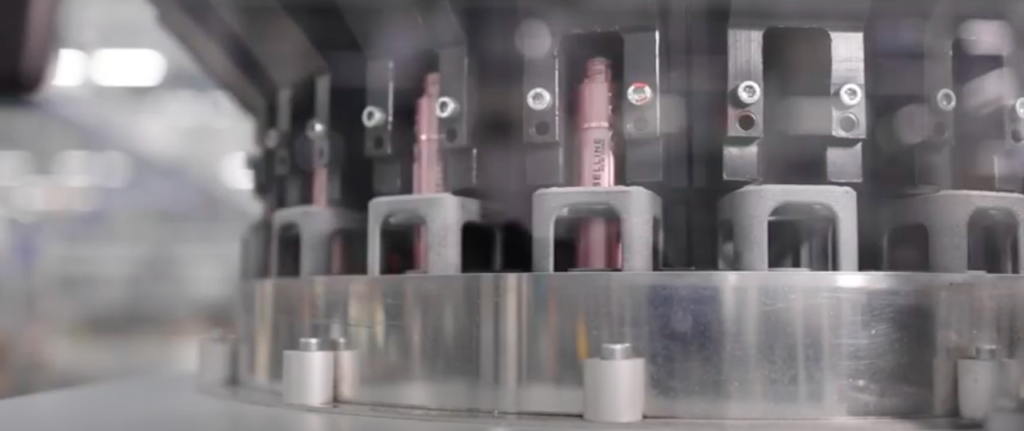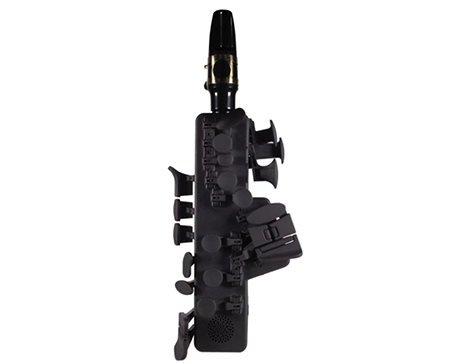At Formnext 2021, HP (NYSE: HPQ) has announced that it was expanding its Digital Manufacturing Network (DMN) of part 3D printing bureaus as it attempts to meet demand for agile production and mass personalization. Among those in demand for more additive manufacturing (AM) is the world’s largest cosmetics company, L’Oréal (Euronext: OR), which aims to scale its AM operations and explore the creation of new cosmetics packaging and applications. Additionally, HP is updating the world about its exciting Metal Jet technology.
L’Oréal relied on HP’s flagship Multi Jet Fusion (MJF) technology to respond to changes in its manufacturing processes, particularly as COVID-19 impacted global supply chains. Specifically, the cosmetics giant worked with HP to design and produce large volumes of modifiable “pucks” to move, fill and label products, a move that allowed the company to customize pucks to quickly respond to changes in consumer behavior during the pandemic. L’Oréal claims that the methodology reduced costs by 33 percent and increased time saved by 66 percent.
While L’Oréal previously embarked on a program to try to 3D print skin using Organovo’s technology, this use of AM is much more immediately useful and realistic. Organovo seems to be struggling in the sci-fi industry it helped to pioneer, but manufacturing will be here for the foreseeable future. This very pragmatic and beneficial application of 3D printing can easily be expanded to other operations and use cases, such as robotic grippers and tooling, as engineers and plant techs begin thinking out of the box.
“Customer-centric innovation and sustainable products are at the center of all we do,” said Anne Debauge, Director of Digital Transformation, Packaging & Development, L’Oréal. “We share HP’s vision to overcome our current limits through new technologies. 3D printing gives us this entrepreneurial freedom to offer new customer experiences. Thanks to this collaboration, we are already gaining in agility in our factories and wish to go further by creating new services.”
Now, the company is aiming to increase the use of this puck system across its global supply chain, which it suggests will allow it to more efficiently produce parts where and when needed. At Formnext, the partners are displaying custom pucks, along with specialty 3D printed textures and lattice packaging for luxury cosmetics. These developments are the result of a project between L’Oréal, HP, and the Alternative and Atomic Energies Commission, le Commissariat à l’énergie atomique et aux énergies altertatives, (CEA).

L’Oréal’s 3D printed pucks.
“Across large industries and new verticals such as cosmetics, our customers want to be more agile and address the growing demand for personalized products,” said Guayente Sanmartin, Global Head of HP’s Multi Jet Fusion business. “With more than 100 million parts produced and growing, we are proud of Multi Jet Fusion’s impact during these volatile times. Our work with L’Oréal is a bright example of the unlimited possibilities enabled by 3D printing. From increasing manufacturing flexibility to reimagining traditional products, there is an enormous opportunity to help transform markets.”
To expand its 3D printing usage, L’Oréal will rely on HP’s DMN, a network of MJF 3D printing suppliers around the world. The DMN now includes over 30 new certified parts providers, who use MJF to design, 3D print, and deliver parts locally. These businesses have been leveraging the various products and accessories recently developed by HP. For instance, ZiggZagg is using HP’s 3D-as-a-Service (3DaaS), which we discussed in a previous article. ZiggZagg, along with companies like Forecast 3D, Jawstec, and Weerg, are using the company’s 3D Factory Services, HP 3D API, HP 3D Center and, most interesting to me, the HP Automatic Unpacking Station.
At Formnext in Hall 12.1 Booth D61, HP and its partners are showcasing a number of related products and parts. While BASF and Oechsler AG used MJF to 3D print a complete bucket car seat made from BASF ULTRASINT TPU01 powder and featuring a unique elastomeric lattice design. European orthodontic chain Impress is using the HP Jet Fusion 5210 3D printer to produce clear aligners. The 2021 Pumundus Challenge Finalists are also presenting their designs, which include a personalized climbing shoe from ATHOS, a personalized hand device from Glaze Prosthetics, and the world’s smallest and lightest saxophone from Odisei Music.

The 3D printed saxophone from Odisei Music.
If you’re like me, you may be experiencing the greatest amount of anticipation in regards to HP Metal Jet. While it is just one of several metal binder jetting technologies on the market, a segment now dominated by Desktop Metal, the sheer size and impact of HP presents the potential for significant disruption in manufacturing. If successful, this will be demonstrated by the use of Metal Jet by Volkswagen to 3D print final parts for the A pillar of the T-Roc Carbiolet.

The 2020 VW T Roc Cabriolet. Image courtesy of Volkswagen.
HP is telling the world that these components have passed crash test certification and weigh nearly 50 percent less than traditional parts. The company is continuing to validate production applications with its partners and customers and will make Metal Jet more widely available in 2022.
“Our early Metal Jet partners and customers such as GKN, Parmatech, Volkswagen, Cobra Golf, and others, are successfully demonstrating our metals mass production advantage,” said Ramon Pastor, Global Head of HP’s 3D metals business. “As we continue to advance our technology, materials, and capabilities, we remain on track to launch in 2022. We look forward to delivering industry leading efficiency, cost savings, and design freedom to help the industry accelerate and scale digital manufacturing.”
Given the immense success of MJF, demonstrated significantly during the outbreak of COVID-19, HP’s strategy seems to be working. We can likely expect a successful public roll-out of the technology that follows in the footsteps of polymers and MJF. If so, VW could end up 3D printing 100,000 car parts by 2025.
Subscribe to Our Email Newsletter
Stay up-to-date on all the latest news from the 3D printing industry and receive information and offers from third party vendors.
You May Also Like
Profiling a Construction 3D Printing Pioneer: US Army Corps of Engineers’ Megan Kreiger
The world of construction 3D printing is still so new that the true experts can probably be counted on two hands. Among them is Megan Kreiger, Portfolio Manager of Additive...
US Army Corps of Engineers Taps Lincoln Electric & Eaton for Largest 3D Printed US Civil Works Part
The Soo Locks sit on the US-Canadian border, enabling maritime travel between Lake Superior and Lake Huron, from which ships can reach the rest of the Great Lakes. Crafts carrying...
Construction 3D Printing CEO Reflects on Being Female in Construction
Natalie Wadley, CEO of ChangeMaker3D, could hear the words of her daughter sitting next to her resounding in her head. “Mum, MUM, you’ve won!” Wadley had just won the prestigious...
1Print to Commercialize 3D Printed Coastal Resilience Solutions
1Print, a company that specializes in deploying additive construction (AC) for infrastructure projects, has entered an agreement with the University of Miami (UM) to accelerate commercialization of the SEAHIVE shoreline...





























